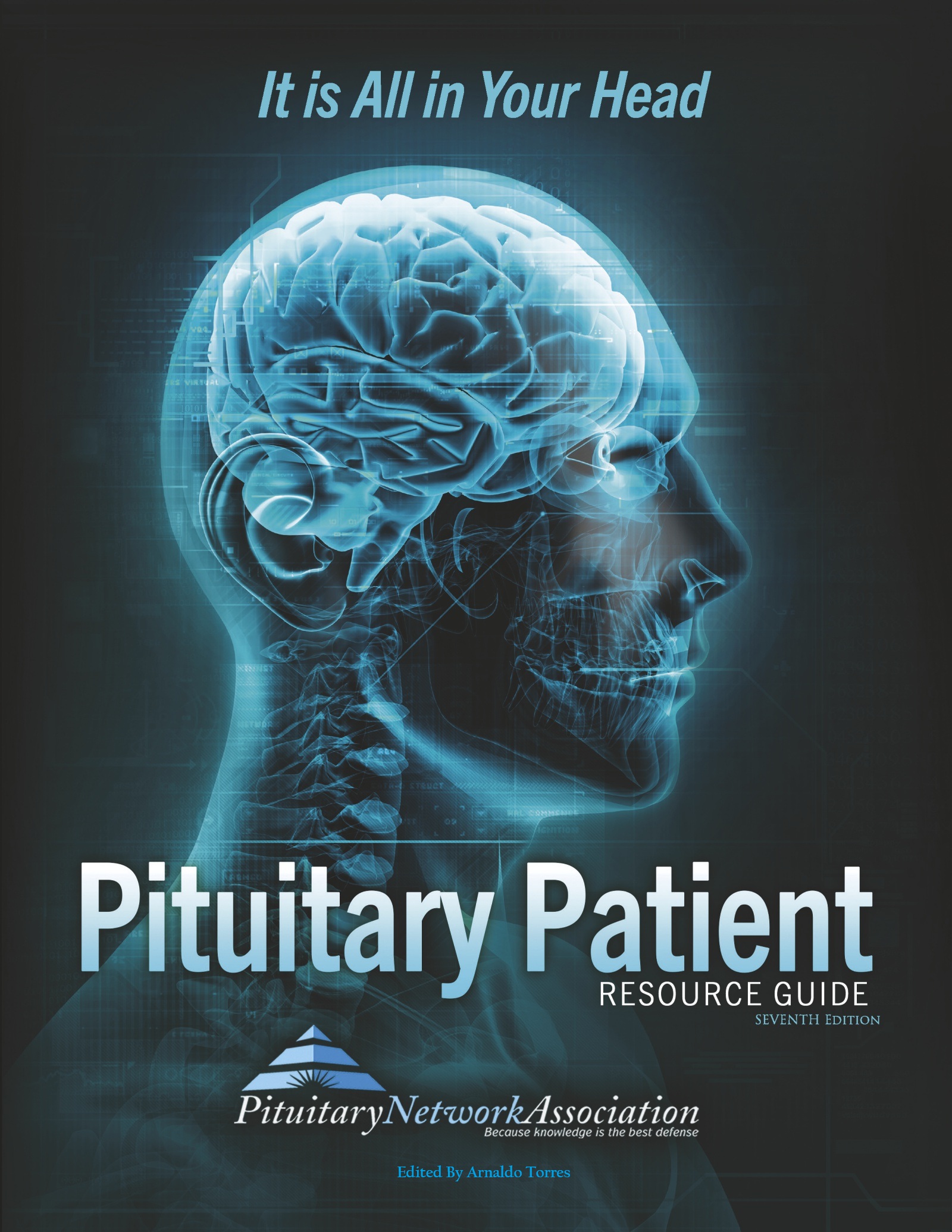Pituitary Glossary starting with A
Absorbtion
In radiology, the uptake of energy from radiation by the tissue or medium through which it passes.
Accessible
Refers to tumors that can be approached by a surgical procedure.
Tumors that are not deep in the brain or beneath vital structures. Inaccessible tumors cannot be approached by standard surgical techniques.
Acromegaly
A disease caused by the overproduction of growth hormone by the pituitary gland.
Acromegaly occurs in 2.6 % of the pituitary patient population but is difficult for some doctors to detect and treat. Acromegaly affects both men and women. In almost all cases, acromegaly is not inherited and cannot be passed on to children.
ACTH
Adrenocorticotropic hormone, corticotropin.
ACTH is a hormone released from the anterior pituitary gland in the brain, also known as: Serum adrenocorticotropic hormone; Adrenocorticotropic hormone. The levels of ACTH change with the body’s natural 24-hour cycle of processes (circadian rhythms). An ACTH test is performed early in the morning for the most accurate results.
Acuity
Refers to clarity or distinctness of hearing or sight.
Sharpness or keenness. A visual acuity test will determine the smallest letters a person can read on a standardized chart held 14 – 20 feet away.
Acupuncture
The practice of inserting needles into the body with the aim of reducing pain.
Acupuncture is among the oldest healing practices in the world. As part of traditional Chinese medicine (TCM), acupuncture aims to restore and maintain health through the stimulation of specific points on the body. In the United States, where practitioners incorporate healing traditions from China, Japan, Korea, and other countries, acupuncture is considered part of complementary and alternative medicine (CAM). CAM is a group of diverse medical and health care systems, practices, and products that are not presently considered to be part of conventional medicine. Complementary medicine is used together with conventional medicine, and alternative medicine is used in place of conventional medicine.
• Acupuncture has been practiced in China and other Asian countries for thousands of years.
• Scientists are studying the efficacy of acupuncture for a wide range of conditions.
• Relatively few complications have been reported from the use of acupuncture. However, acupuncture can cause potentially serious side effects if not delivered properly by a qualified practitioner.
• Tell your health care providers about any complementary and alternative practices you use. Give them a full picture of what you do to manage your health. This will help ensure coordinated and safe care.
Acute
Of short duration, rapid and abbreviated in onset.
Describes something that happens suddenly and for a short time. Opposite of chronic.
Adenoma
A benign tumor that arises in or resembles glandular tissue.
May or may not produce hormones in excess. Presence may affect normal glandular function.
ADH
Antidiuretic hormone, vasopressin.
Also known as Arginine vasopressin; Antidiuretic hormone; AVP; Vasopressin. ADH is also a test (water restriction test) that measures the amount of antidiuretic hormone (ADH) in the blood. ADH is found in the body and it is also given as a medication.
ADH is a hormone stored in the posterior pituitary gland in the brain, regulating water levels in the body. ADH interacts with the kidneys to increase total body water increasing blood volume and blood pressure. The release of ADH is controlled by cells called osmoreceptors and baroreceptors. Osmoreceptors are specialized areas in a part of the brain called the hypothalamus. These cells measure the concentration of particles in the blood. When the concentration is high, the pituitary releases more ADH, causing more water to be retained to dilute the body fluids. When the concentration is low, the pituitary releases less ADH.
The heart also senses blood volume and blood pressure, and signals the pituitary to release more ADH when blood volume or blood pressure are low and less ADH when they are high.
Adhesion
Union of two tissue surfaces. Also, scar tissue that can form in the area of a previous operation.
Adhesions are scar-like tissues that form between two surfaces inside the body. Surgery, inflammation, or injury can cause tissues to bond to other tissue or organs, similar to the forming of scar tissue. Adhesions can also form between the two surfaces. Surgery may be done to allow normal movement of the organ and reduce symptoms caused by the adhesion. However, there is a risk for more adhesions as the number of surgeries increase
Adjuvant
A therapy used in addition to or accompanying another treatment.
Adjuvant (therapy). Treatment given after or in addition to the primary treatment to increase the chances of a cure. Adjuvant therapy may include chemotherapy, radiation therapy, hormone therapy, or biological therapy.
Adrenal Glands
A pair of endocrine glands which produce small quantities of vital hormones.
The adrenal glands sit on top of the kidneys and are controlled by the pituitary gland. They produce aldosterone which regulates salt and potassium balance, cortisol which is a stress hormone, and weak sex steroids.
Allergen
A substance that is foreign to the body and, in some people, can cause an allergic reaction.
An allergen is a substance that can cause an allergic reaction. Allergens are substances that, in some people, the immune system recognizes as “foreign” or “dangerous” but cause no response for most people. Examples include pollen, molds, and certain foods.
Allergy
A hypersensitivity of the body’s immune system in response to exposure to specific substances (antigens).
A hypersensitive immune reaction to a substance that normally is harmless or would not cause an immune response in most people. An allergic response may cause harmful symptoms such as itching or inflammation or tissue injury. Also called Hypersensitivity.
Alopecia
Loss of hair; baldness in areas where hair is usually present.
A common side effect of radiation therapy to the brain and some chemical therapies.






